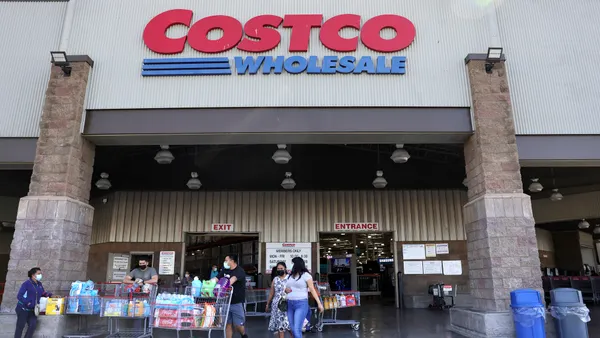Dive Brief:
-
Etsy Q4 revenue rose 4.3% year over year to $842.3 million, with gross merchandise sales slipping 0.7%. Net income in the quarter fell 24% to $83.3 million.
-
The company, which also runs music gear marketplace Reverb and U.K.-based apparel marketplace Depop, ended the year with a record 92 million active buyers, up 3% year over year.
-
For the year, revenue rose 7.1% to $2.7 billion, and the marketplace swung into the black, with $307.6 million in net income, versus last year’s $694 million net loss (due to a $1 billion asset impairment charge from its Depop and Elo7 acquisitions).
Dive Insight:
After flirting with growth based on expanding its seller base and drifting from its reputation as a marketplace for handmade goods, Etsy is working hard to regain that differentiation.
“Most other players are competing head-to-head to sell the exact same merchandise, focused on selling at $0.02 cheaper or shipping it two hours faster, and this has resulted in the commoditization of the entire experience,” CEO Josh Silverman told analysts Wednesday. “But that's just not Etsy.”
Amazon, Walmart, Shein and Temu are gobbling up market share, while almost all other players are losing share — and Amazon and Walmart are particularly fierce competitors in the space, he said.
“So if you look at who is actually, in terms of volume, taking volume in e-commerce, they sell essentials. And when you read their earnings call scripts, what they say in their earnings call is what's driving their sales is essentials and their headwinds are discretionary products,” he said. “The second thing is all four of those brands stand for deep discounting.”
Those players are doing especially well right now because stretched consumers are being careful about their discretionary spending. But Etsy has hung in there, adding 8 million new buyers, with Etsy customers spending $3.6 billion on the Etsy marketplace in the fourth quarter alone, he noted.
“So, tens of millions of people are — 92 million people, in fact — are opening their wallet to come and buy something on Etsy, even in this environment,” he said, adding, “So it's a very big focus of ours, to make sure that mass-produced items are not visible on the site. It's bad for the brand. And it's not helpful for our sellers in terms of price competition.”
While Silverman dismissed the tough macroeconomic environment as “a moment in the cycle, and I think we'll move to better moments in the cycle, hopefully, soon,” Bank of America analysts Curtis Nagle and Steven McDermott warned that, in the meantime, the company will likely struggle.
“Etsy has built a high-margin and differentiated marketplace that, in our view, has strong competitive barriers given that is does not directly compete with larger retailers and marketplaces. We believe that Etsy can return to mid-single-digit [gross merchandise sales] growth in 2024 on easy comparisons and low relative market share,” they said in a client note regarding the quarter. “However, in the near to medium term, we are cautious on revenues reaccelerating due to reopening and macro volatility, which could impair demand for Etsy's discretionary products.”
Silverman touted improvements being made to its search algorithm, a loyalty program in the works and the recent launch of Gift Mode, an AI-powered gift-recommendation service.
“We believe gifting is an ideal use case for Etsy,” he said. “We have an enormous conviction that this is a space we can and should own and, if done well, can lead to market share gains across our core categories. After all, do you really want to buy that special gift at a mass retailer whose brand primarily stands for commoditized and cheap?”
Bank of America analysts noted the potential of such moves to “reaccelerate GMS and drive multiple expansion,” but said they remain in wait-and-see mode.















